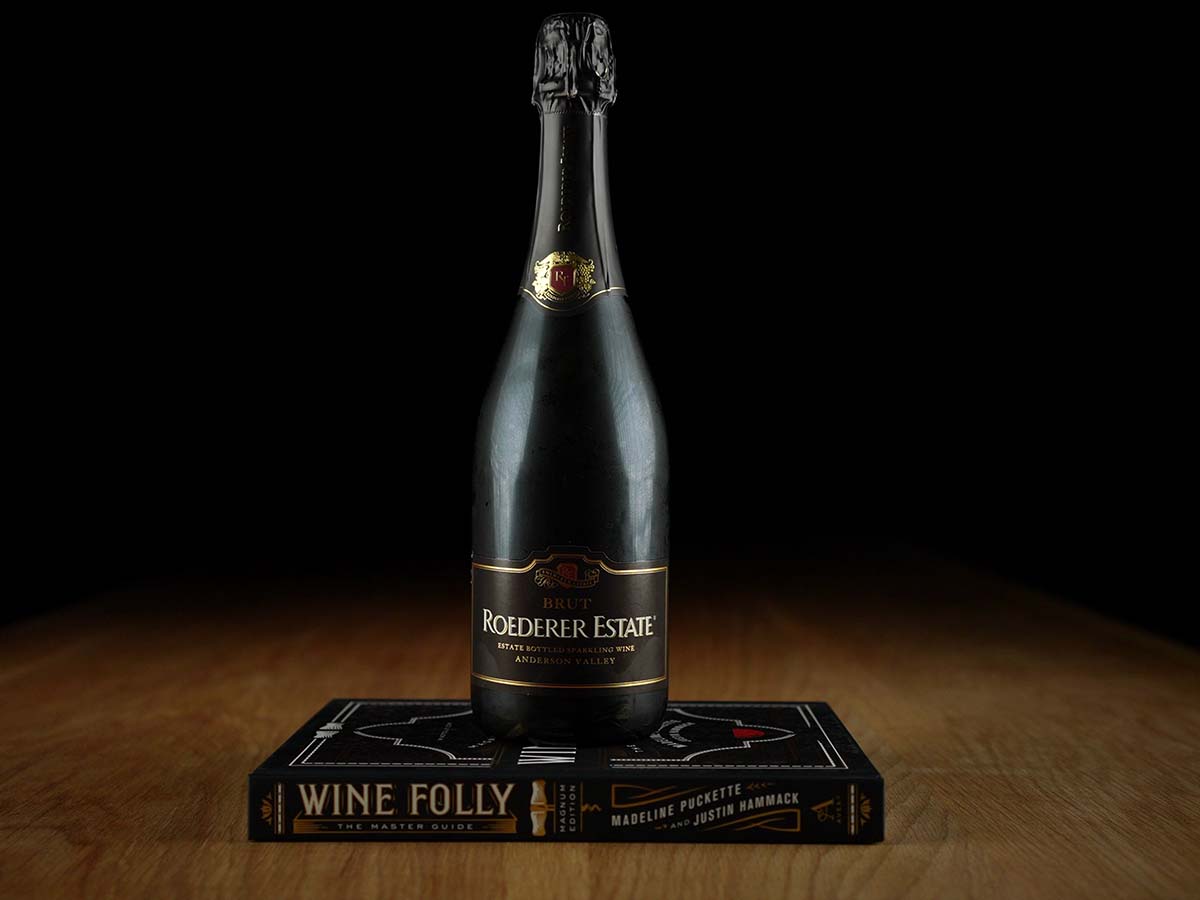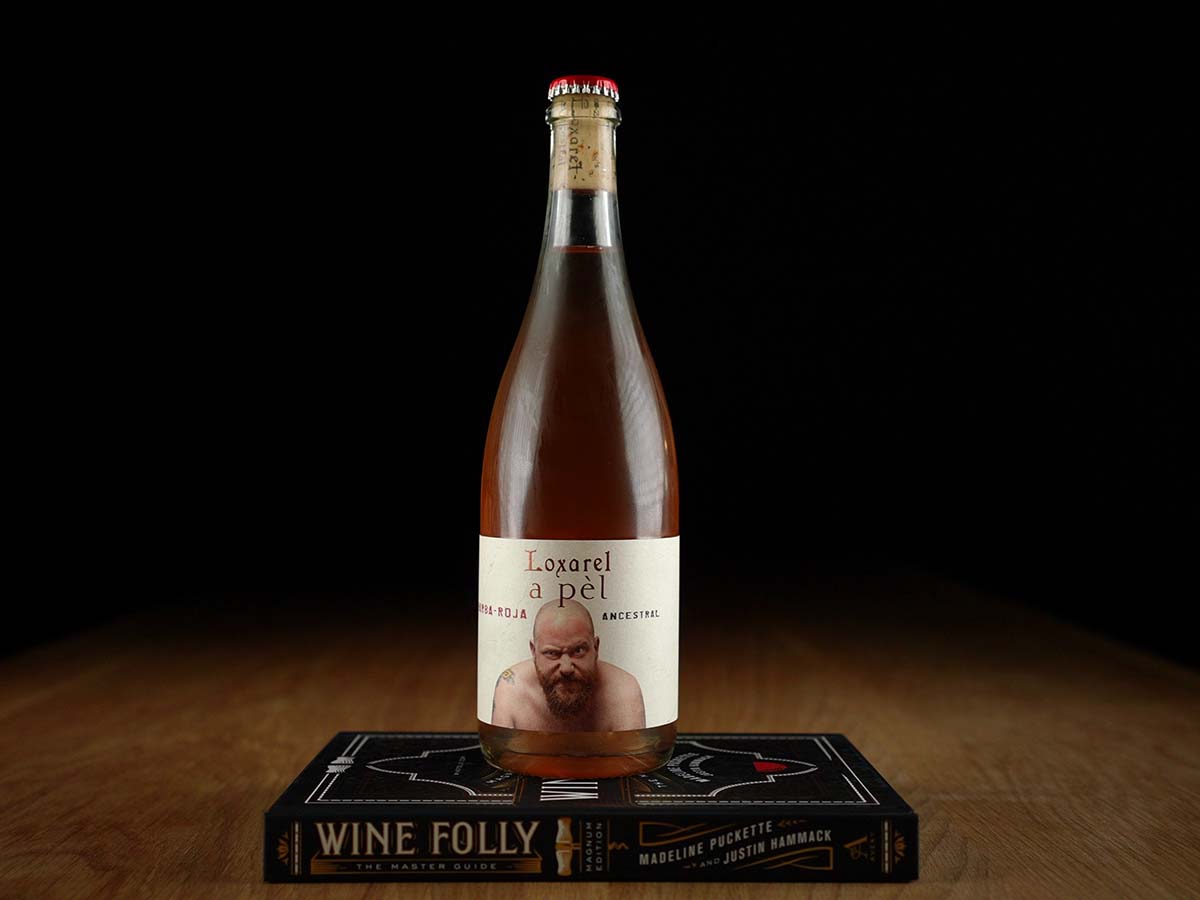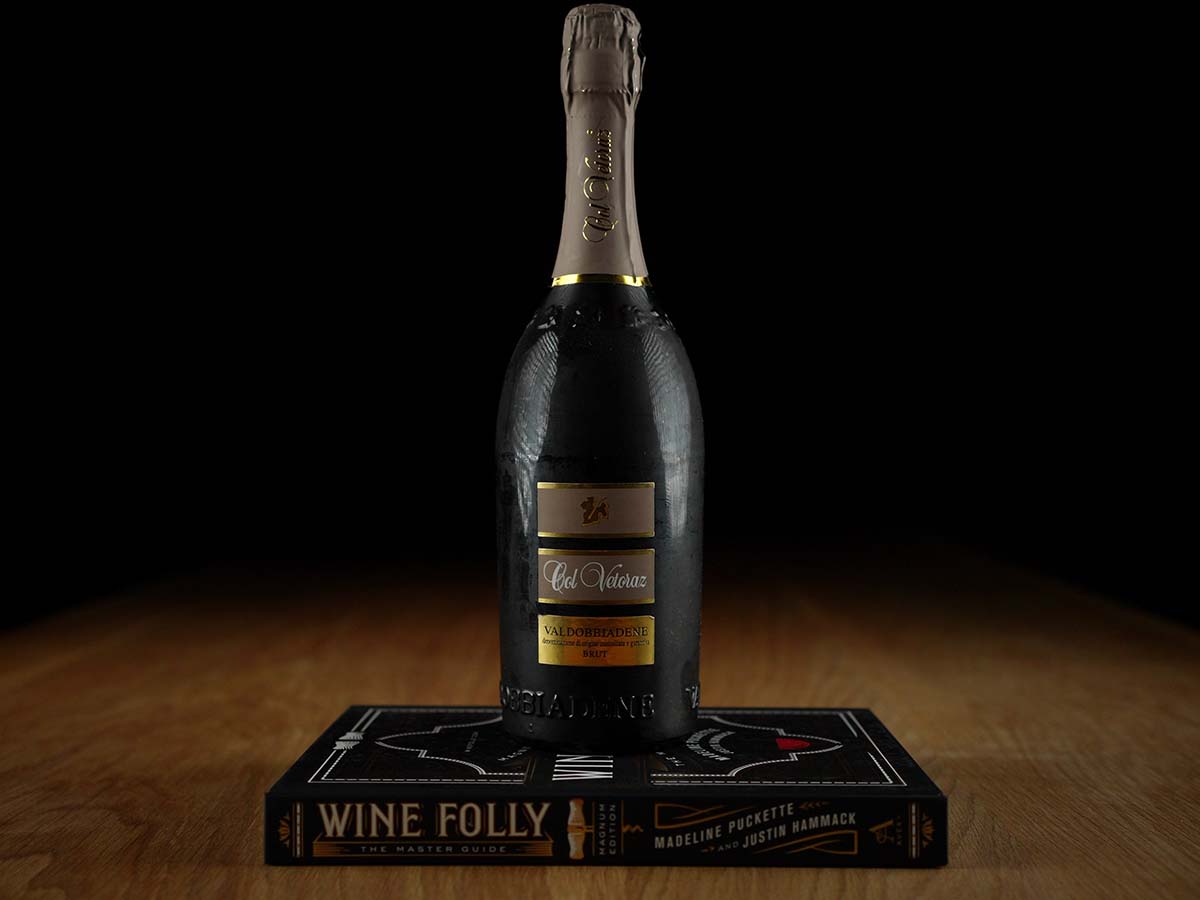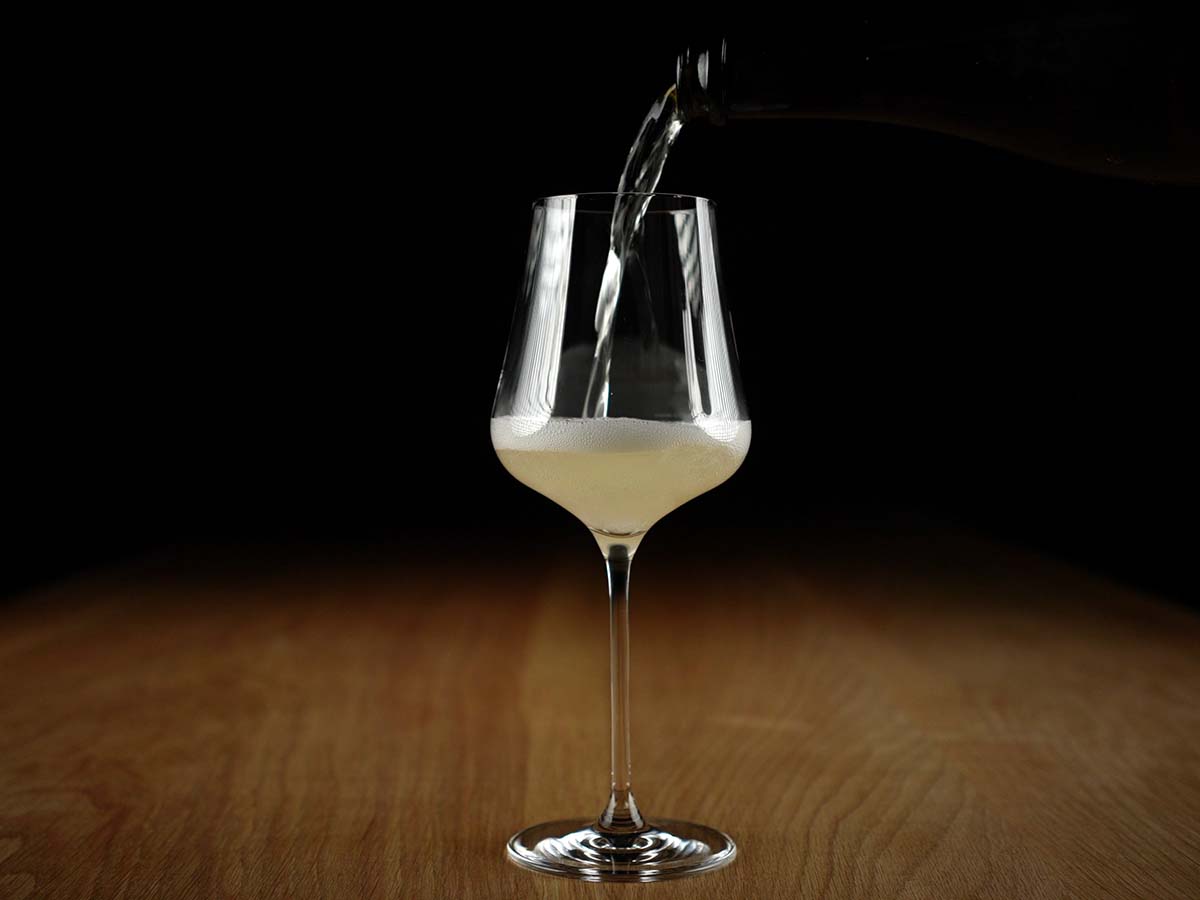Champagne is the world’s most famous sparkling wine with its fine bubbles, complex toasty, apple, and nutty aromas.
But did you know that there’s more to sparkling wine than just Champagne? Let’s decode secrets on sparkling wine so you can find amazing alternatives, many of equal quality but perhaps lower in price than Champagne.
Wines Tasted in this Video
3 Types of Sparkling Wines To Explore
Different sparkling winemaking techniques emerged thanks to technology and popularity at their respective times in history. Each offers up a unique style of tasting adventure. Traditional Method, so named because it became the norm; Pétillant Naturel, often shortened to “Pét-Nat”; And Tank Method, sometimes called “Charmat Method” which originated in France and Italy.

The Traditional Method – the Rise of Champagne
The method is a specific series of steps that involve making a base wine, adding sugar and yeast to that wine in a bottle, which creates a second fermentation inside the bottle – this is what gives Champagne its frothy bubbles.
Once the yeast has eaten all the sugar in the bottle, the wine is dry, and the carbon dioxide (CO2) is stuck in the bottle, meaning when you open it, it will be bubbly. However, that yeast, with no food left, dies and creates a cloudy wine. We call these dead yeast “lees.”
If we leave the wine in contact with the lees for a long time, we get toasty, bready, and nutty aromas. That’s what makes Traditional Method sparkling wines so unique. When the winemaker decides the wine has spent enough time on the lees, they remove them, using a method called “disgorgement.”
What Do Traditional Method Wines Taste Like?
Traditional method sparkling wines spend time on lees, which causes “autolytic” aromas – these smell like bread, biscuit, brioche, and dough flavors. The longer they spend, the more of these aromas they have and the more expensive they tend to be.
Some premium cuvée examples are on lees a very long time, sometimes 10+ years! Which drives up the cost as time equals money. However, if you know what to look for, you can find amazing deals. Let’s see what we need to know.
French Crémant
There are many regions within France, but outside Champagne, producing great sparkling wine using the same grapes and method. Look for “Crémant” on the label in regions like Burgundy, Alsace, Limoux, and the Loire to find some great deals.
Spanish Cava
Cava in Spain also follows the traditional method and can offer some amazing value for wines that have that doughy, bready complexity. For some exceptional examples, look for “Reserva,” “Gran Reserva,” or “Paraje” on the label. They use indigenous grape varieties such as Xarello, Macabeo, and Parellada, instead of the traditional Champagne grapes of Pinot Noir, Meunier, and Chardonnay, which tend to give a lovely earthy richness to the wines not seen anywhere else.
Italian Metodo Classico
Check out Franciacorta and Trento DOC in Northern Italy to find that intense doughy goodness and nuttiness alongside sharp freshness and apple notes. These are based on the traditional Champagne grapes of Pinot Noir and Chardonnay.
These traditional method sparkling wines are often overlooked but can offer some delicious alternatives to Champagne. For the finest examples, look for “Riserva” on the label. That means aging for 3 years for the Trento wines and 5.5 years on the lees for Franciacorta (wow!).
South African Cap Classique
Based on Chardonnay and Pinot Noir, but also using Chenin Blanc, these racy and age-worthy wines can offer out-of-this-world value. Look for “Cap Classique” on the label for the real deal.
Californian Sparkling Wine
Some Champagne houses set up shop throughout coastal California when they saw how amazing the wines could be from this great state. Blending Champagne know-how with Californian terroir has created real knockout examples, many of which are hard to tell, nay impossible, from Champagne in a blind tasting.
German Sekt
Germany produces a lot of sparkling wine, which they call “Sekt”. Only a small percentage of winemakers use the Traditional labor-intensive process, using grapes like Riesling, Silvaner, Pinot Noir and Chardonnay. Look for one of the following to find some: Traditionelle, Klassische Flaschengärung, or Winzersekt.

The Time before Champagne – Pét-Nat
Did you know people were making sparkling wine before Champagne? It’s true!
We all think about wine always coming in a bottle, but centuries ago, even up to the mid-1800s, wines were often kept in barrels, and then someone called a “bottler,” which became butler, would move wine from the barrel to the bottles for dinner time.
How does this relate to sparkling wine? Well, as early as the 1500s, people noticed that if they put their partly fermented wine into a bottle, rather than a barrel, and then sealed it, the resulting wine would be sparkling after a few months, as if by magic!
We now know (thanks, science!) that the yeast fermenting the juice was still working, eating sugar, and creating carbon dioxide (CO2). When they do this in a sealed bottle that CO2 gets trapped and creates a sparkling wine.
A lot of pressure builds up, so early bottles often exploded, but if you were lucky enough, you’d end up with a “Pétillant Naturel” or naturally sparkling wine. This method is also called “Méthode Ancestrale.”
What Do Pét-Nat Wines Taste Like?
These wines vary a lot in flavor because they are made with many different types of grape varieties! You can have a mixture of fresh and fruity, to doughy and brioche, to funky, depending on the producer. Because these wines aren’t disgorged (the lees taken out) Pét-Nat wines will be a bit cloudy. Don’t worry, it’s safe to drink!
These tend to be artisanal and in many cases natural wines, with really small production, so the costs and quality tend to be a bit higher than your average sparkling wine. But they’re a great way to experiment with new and funky flavors.
What To Look For In Pét-Nat Wines
“Pét-Nat” or Méthode Ancestrale are some key words. They normally have pretty funky labels, and they’ll be cloudy or hazy too. You’ll probably find them in wine focused restaurants and bars, but also independent small wine merchants too. They’re often bottled with a crown cap (the same one you find on beer bottles).
Some areas producing lots of fun and funky Pét-Nat are Austria, Spain, France, California, and Australia.

Science Prevails – The Tank Method
Back in the late 1800’s people were looking for a smarter, faster, more efficient way of making sparkling wine without losing quality.
Two enologists in different countries, Charmat in France and Martinotti in Italy, came up with a solution: Instead of having a second fermentation in a bottle, why don’t we do it in a large, pressurized tank? It saves time and is more efficient.
What Do Tank Method Wines Taste Like?
These wines don’t spend time on their lees (dead yeast), so they don’t have those “autolytic” bready, brioche notes. But that’s not a bad thing!
Sometimes you have a grape variety, like Glera in Prosecco or Moscato in Asti, that you wouldn’t want to cover up with those aromas. When you want your varietal characteristics like fruit and floral notes to shine bright, Tank Method is a great choice.
Prosecco
Prosecco is the best-known Tank Method wine. That’s why you find such amazing floral and peach aromas without interference from biscuit and brioche notes.
To find excellent Prosecco, look for “DOCG” on the label and “Valdobbiadene,” and for really exceptional Prosecco, there’s the crème de la crème: “Cartizze.”
Red and Sweet Sparkling Wines
Other great examples of tank method wines from Italy make sure to try Lambrusco (a red sparkling!) and Asti, a sweet sparkling wine made from Moscato grapes.

Final Tips and Tricks for choosing your Sparkling Wine
Sweetness Levels
Knowing how much sugar is in a sparkling wine can be tough – if you like dry wines (that don’t taste sweet) you can look for the following terms (no matter what sparkling wine you have).
- Brut Nature / Zero Dosage
- Extra Brut
- Brut
- Secco (Italian for Dry)
Anything other than those will mean the wine has a perceptible amount of sugar. For example, Extra Dry has more sugar than a wine labeled Brut and has a slight sweetness. If you’re looking for sweeter sparkling wines, look for Doux.
Grape Varieties
Most traditional-method sparkling wines look to Champagne for inspiration. Therefore, many of these wines use Chardonnay and Pinot Noir. Some key terms can tell you what’s in the bottle:
Blanc de Blancs: This means “white from white” – so white wine made from white grapes, and in the case of Champagne and most other traditional method wines, this means 100% Chardonnay. They tend to be quite austere but can age a very long time.
Blanc de Noirs: This means “white from black” – these are white sparkling wines made from black grapes (mind blown!). They only use Pinot Noir or Meunier, or both, to make the wine, which means you’ll have a bit more of a fruity note and less austere than Blanc de Blancs.
Further reading – check out How Sparkling Wine is Made for more information
Now that you’re armed with the tools to demystify the sparkling wine shelf, head out to your local wine shop, or take a closer look at the sparkling wine section of the wine list at your local restaurant to find your new favorite sparkler.
To learn more about sparkling wines and everything else wine related, subscribe to our newsletter.